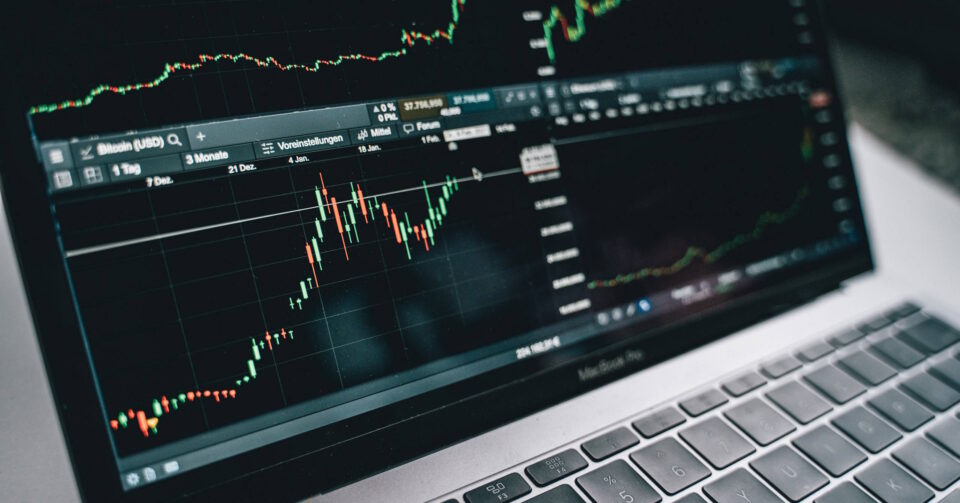Will the Philippine Stock Market Index (PSEi) Make a Comeback?
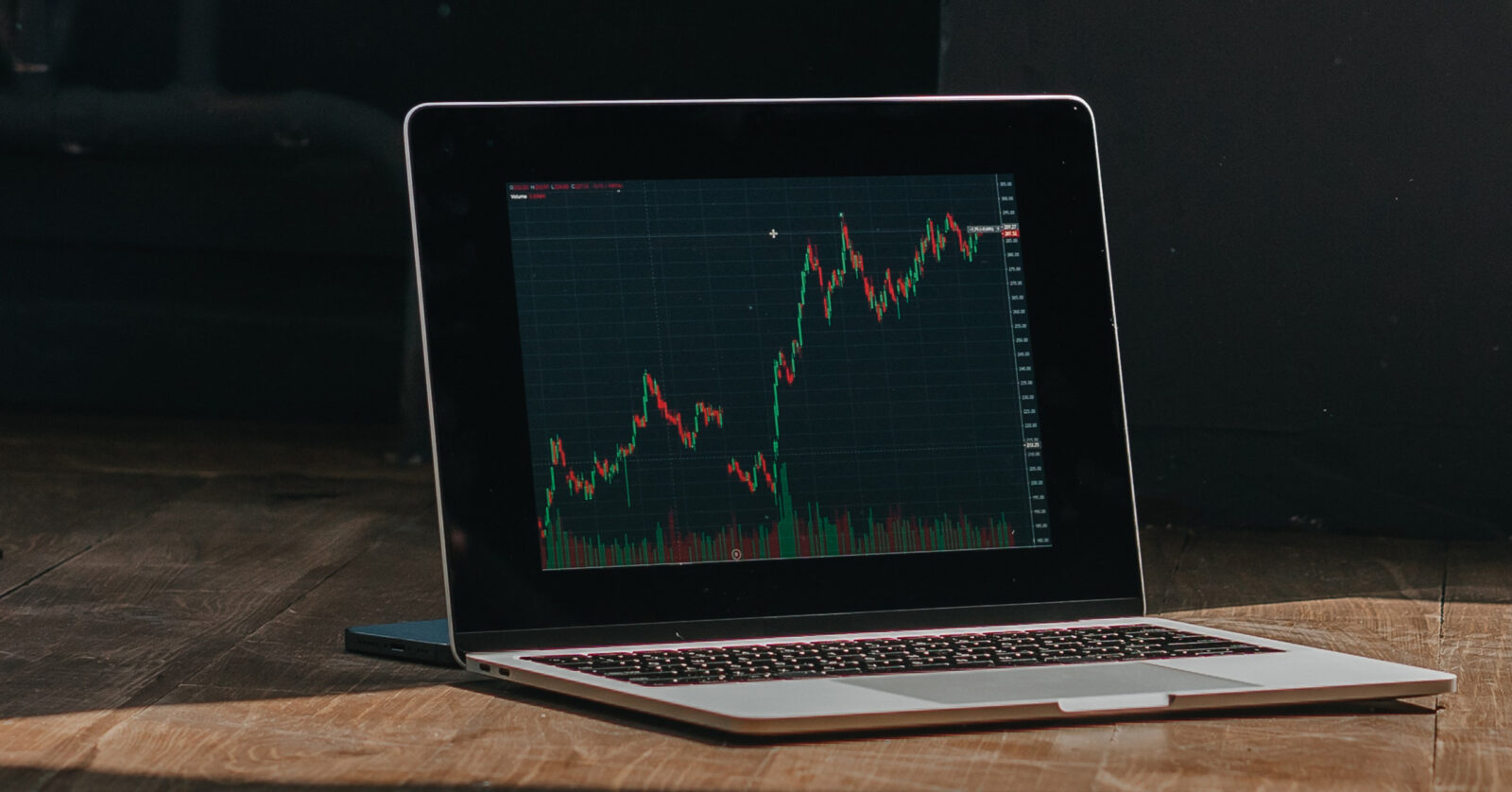
Traders thought that the PSEi would finally break the 7000 levels until it tanked. Will it start to bounce back or is it just a short market correction? Here’s what we know.
Since the start of 2023, the Philippine Stock Exchange Index (PSEi) was having an uptrend rally from 6586.01 to its recent peak at 7094.86. However, during the last half of January, PSEi started to tank by -3.80%—thus closing last February 15 at 6824.74. With its recent performance, many traders are in a precarious situation, or what seems to be a bull trap.
Defined as a “false signal—referring to a declining trend in a stock, index, or other security that reverses after a convincing rally and breaks a prior support level,” a bull trap occurs when a trader buys a security that breaks out above a resistance level, which “traps” them in the trade. This means that traders who are caught in a bull trap may be forced on the wrong side of price action to exit positions with unexpected losses.
But given the PSEi’s decrease last February, is there still hope for improvement this 2023? Here’s what the numbers show.
What Really Happened
Despite this, the Philippine Statistics Authority (PSA) reported that the country’s Gross Domestic Product (GDP) in 2022 Q4 grew to 7.2% and 7.6% in full-year 2022. This year-end report can be one of the catalysts of the hopeful performance of the index during the first half of January 2023.
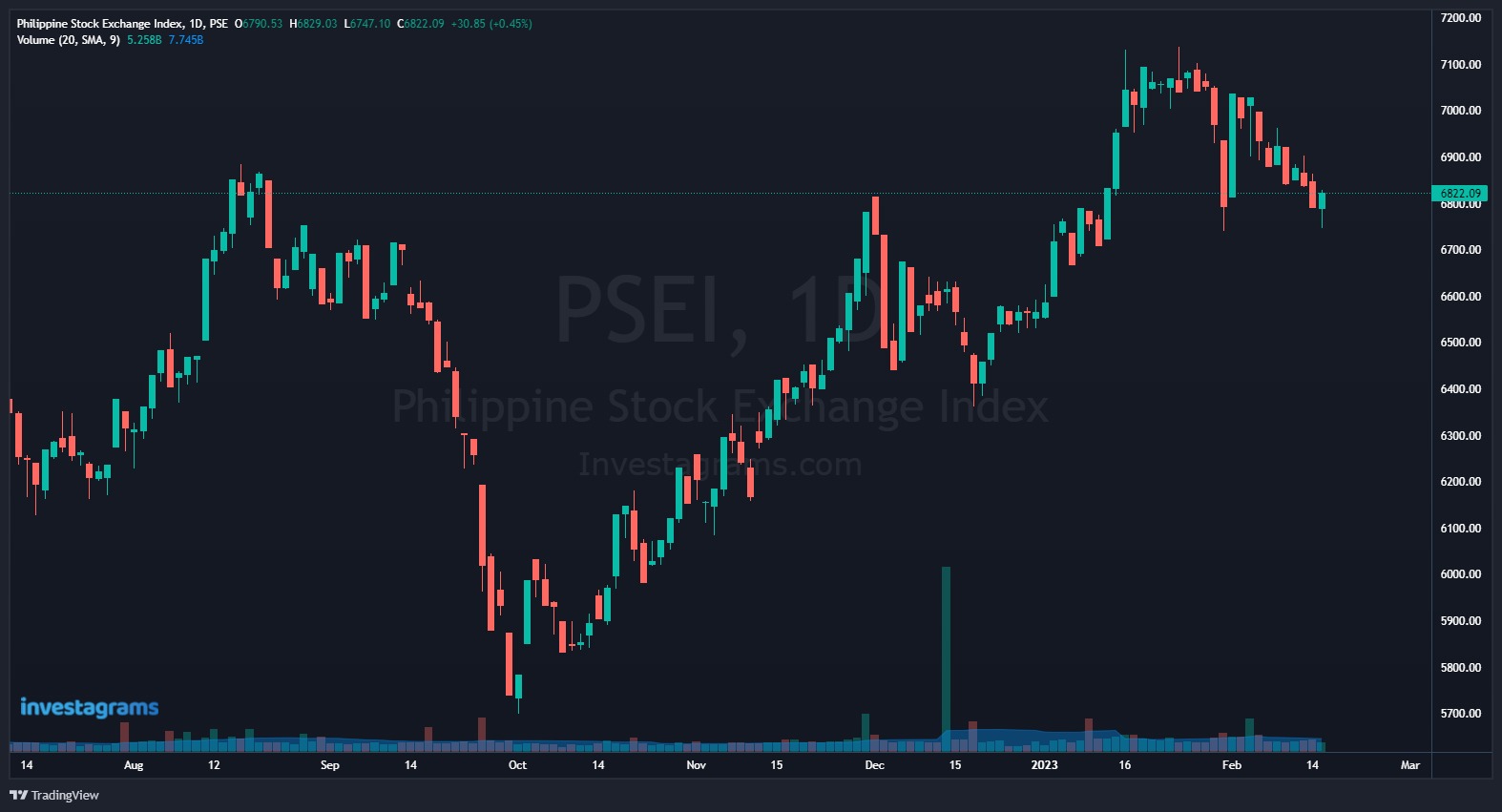
After 9 months of drought, the local market finally tasted the 7000 levels last January 16. Because of this, some traders were expressing their optimism regarding PSEi.
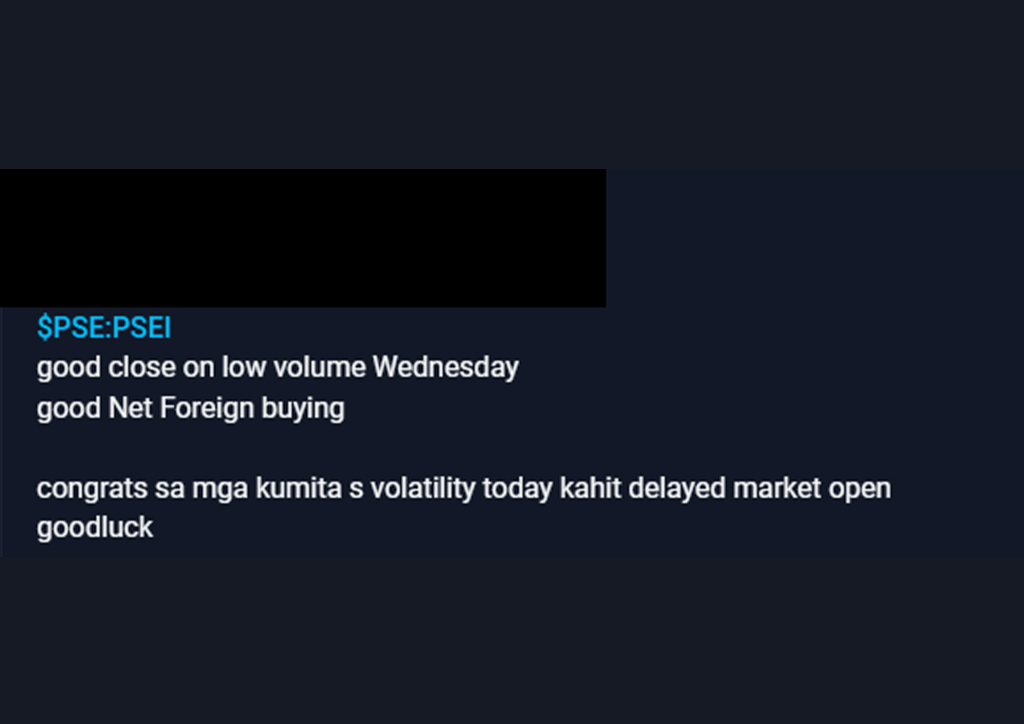
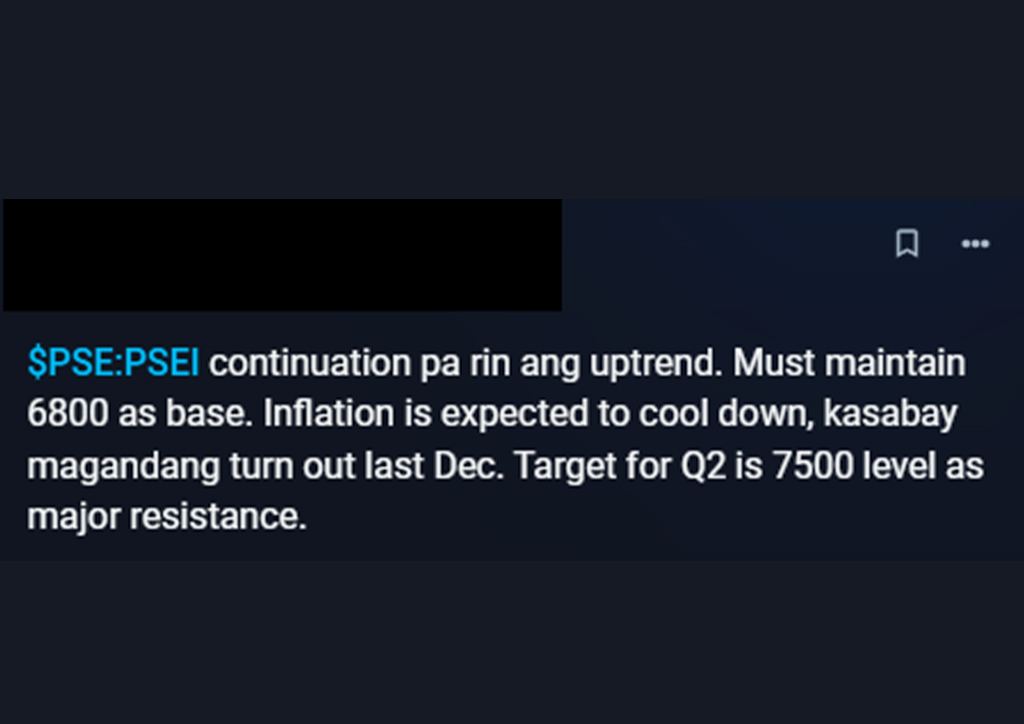
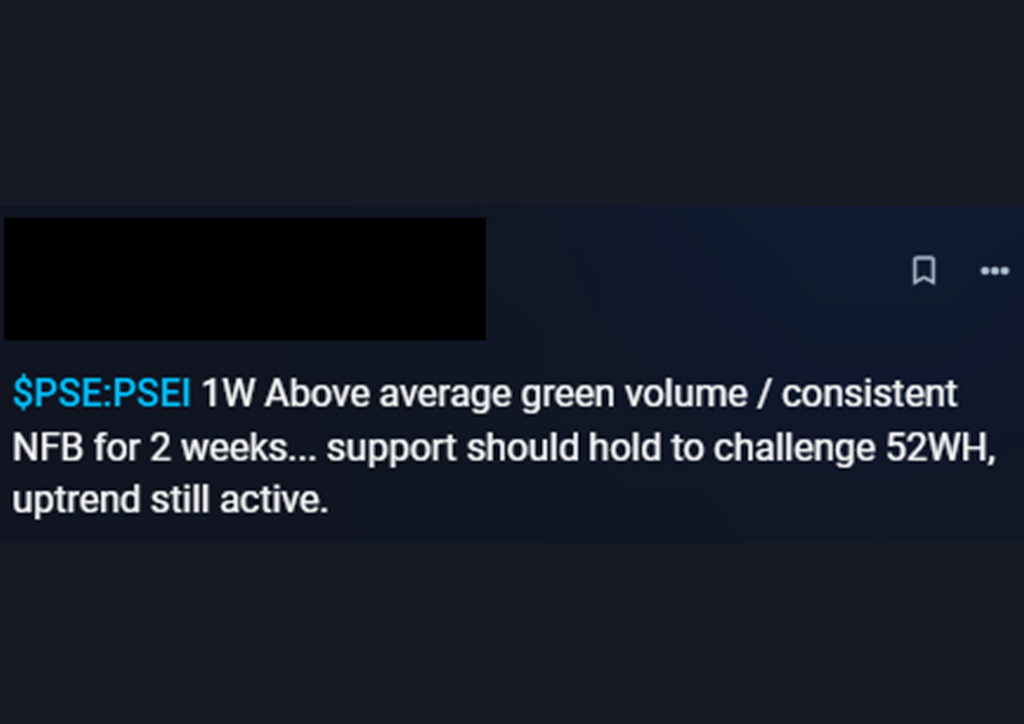
Amid the positive market sentiment, however, PSEi started to pull back in the second half of January 2023, thus failing to penetrate the 7000 levels—instead, wavering at the 6800 range.
Market observer, Jonathan Ravelas, tweeted, “If [the] PH index market fails to touch the 2021 or 2022 highs of 7500, [the] market will tank. Technical market indicators will signal a topping out to traders that prices may have peaked and prices may fall is just around the corner.”
While traders and market observers may have differing opinions regarding the future performance of the Philippine Stock Market, no one knows the outcome until it actually happens in the market. With that, a trader must know how to spot market opportunities in order to maximize profit from any highs or lows in the market.
How to Spot a Bull Run
A bull run is a period where the prices of securities, or in the case of the stock market—equities or shares, are rising or expected to rise. One obvious indicator is that the charts are trending upward. However, that is a shallow tell. Let’s dive into how Investopedia characterizes a bull market.
1. Prices Must Increase by at Least 20% From Previous Lows.
The PH economy is usually affected by how the world economy performs. As the world is enjoying its bull runs, so is the Philippines. Notable bull runs in the country are from 2003 to 2007, wherein the index grew by 268%. This growth was brought about by the international commodity supercycle and growth in emerging economies.
After that, the local market paused for two years, then set another bull run from 2009 to 2018 wherein the index grew by 400%. After the recent glory years came the current market condition—represented by slow growth and a dipping market, primarily because of the pandemic.
However, do take note that this is not a surefire sign for a bull run, as analysts can typically only recognize this phenomenon only after it has happened.
2. There Must be a Strong GDP.
Simply put, GDP or Gross Domestic Product refers to the total goods a country has produced within a certain period. This can indicate the size and growth of a country’s economy.
As of Q4 of 2022, the Philippines’ GDP increased to 7.2%. This is an improvement as compared to 2021’s GDP at 5.7%, which, according to ADB, was brought about by the easing of the pandemic restrictions. Many Filipinos are already returning to offices; malls are operating at regular hours; travel and tourism are getting back on their feet.
This revitalization in the economic activities of Filipinos greatly contributed to economic growth, despite global inflation and an increase in fuel prices. As for the result of economic growth? More profit.
3. The Country Must be Experiencing a Drop in Unemployment.
The Philippine Statistics Authority (PSA) reports one of the lowest unemployment rates since 2021. Last August 2021, it was recorded at 8.1%. As of August 2022, the unemployment rate improved by only 5.3%.
How does this correlate to a bull run? Similarly, a drop in unemployment rates coincides with a rise in corporate profits.
4. There Must be Obvious Investor Confidence.
Investor confidence refers to the “investors’ willingness to engage in the investment opportunities and associated intermediation channels available to them based on their perception of risk and return.” This can also be observed through high demand in the market. If you want to have a feel for investor confidence, you can look at Volume and Net Foreign Buying.
Investor confidence goes hand-in-hand with having a sense of security, and in a bull market, this translates to higher valuations, since “investors are willing to pay more due to the perceived potential for price appreciation.”
5. IPOs Are Increasing During a Bull Market.
Initial Public Offering or IPO is a process undergone by a private company to make itself a public entity by selling its shares on a stock exchange. A company goes IPO because of various reasons, including raising more capital, debt payment, or expansion.
PSE has a record-breaking number of yearly IPO in 2022. It publicly launched nine companies in 2022, the most maiden offerings in the last 16 years! And in bull markets, there’s usually an increase in the amount of IPO activity.
How to Spot Bull Traps
While a bull run is a good trend, a bull trap is not. Unfortunately, with the recent performance of PSEi, many traders may have fallen into a bull trap. This is a market phenomenon in which traders buy at breakout, but the price, unfortunately, went to reversal.
As a “false signal” that leads to a declining trend in a stock, index, or other security that has reversed after a convincing rally and breaks a prior support level, the trader ends up suffering a loss. To stop this from happening often, traders can seek confirmation following a breakout through technical indicators and/or pattern divergences.
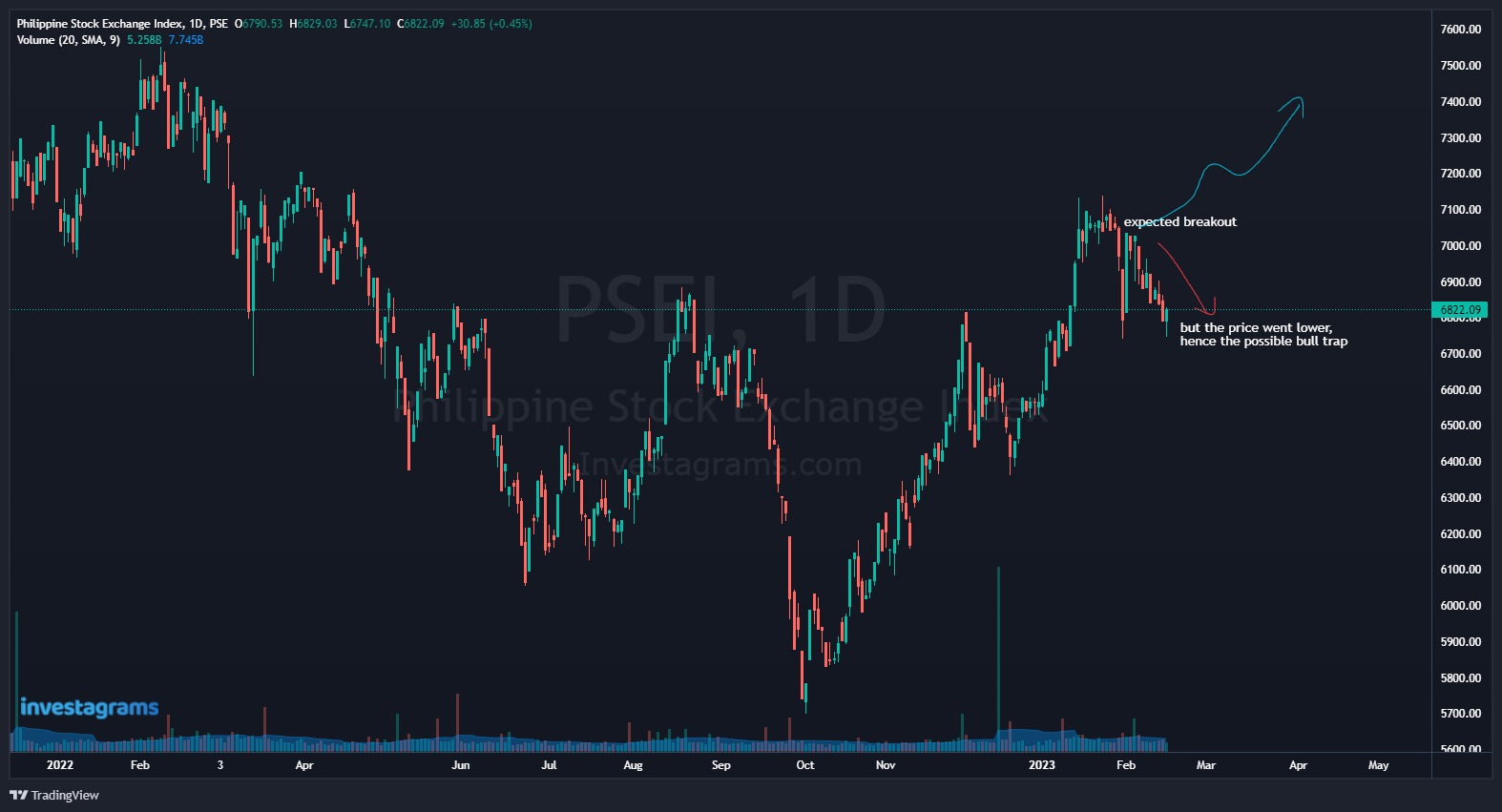
The Best Thing to Do
The market is primarily based on probability. Nothing is set in stone until it happens in the market and the same goes for both bull runs and bull traps. A trader can study as much fundamental and technical analysis as he or she can, but these forecasts may not always be right.
To play wisely in an unpredictable market, traders and investors must always implement risk management. Wise traders and investors must always have a cut loss price to preserve capital, and a target profit to avoid greed. In addition, having the hunger to learn more about how the market behaves and the companies you want to invest in.

